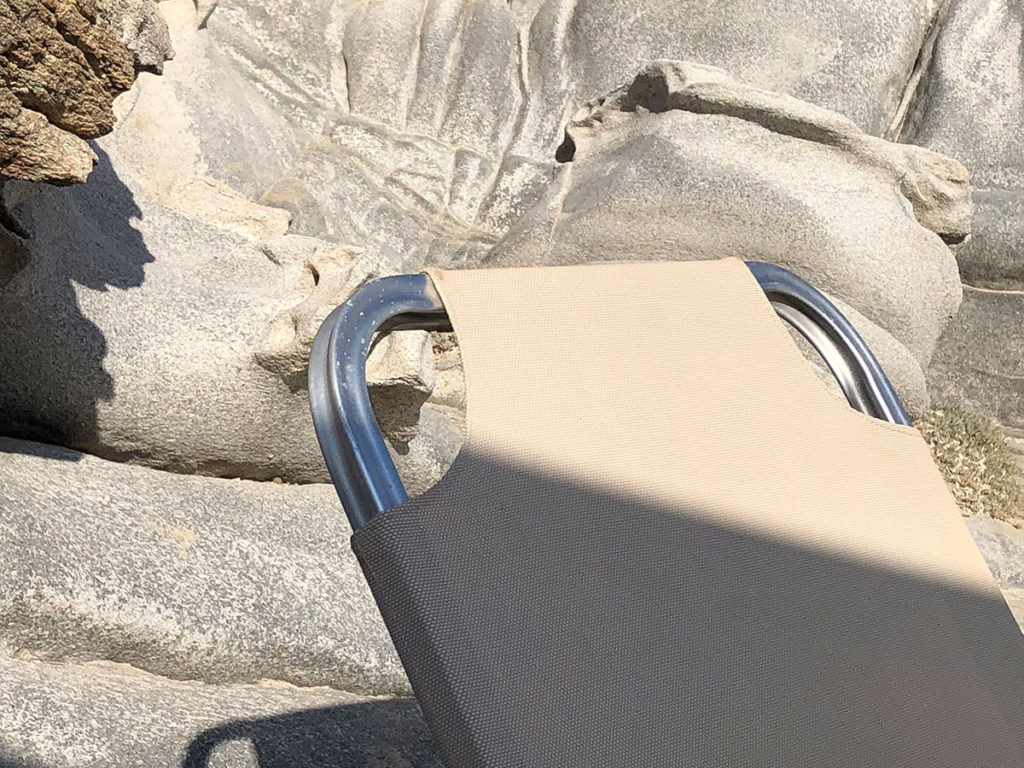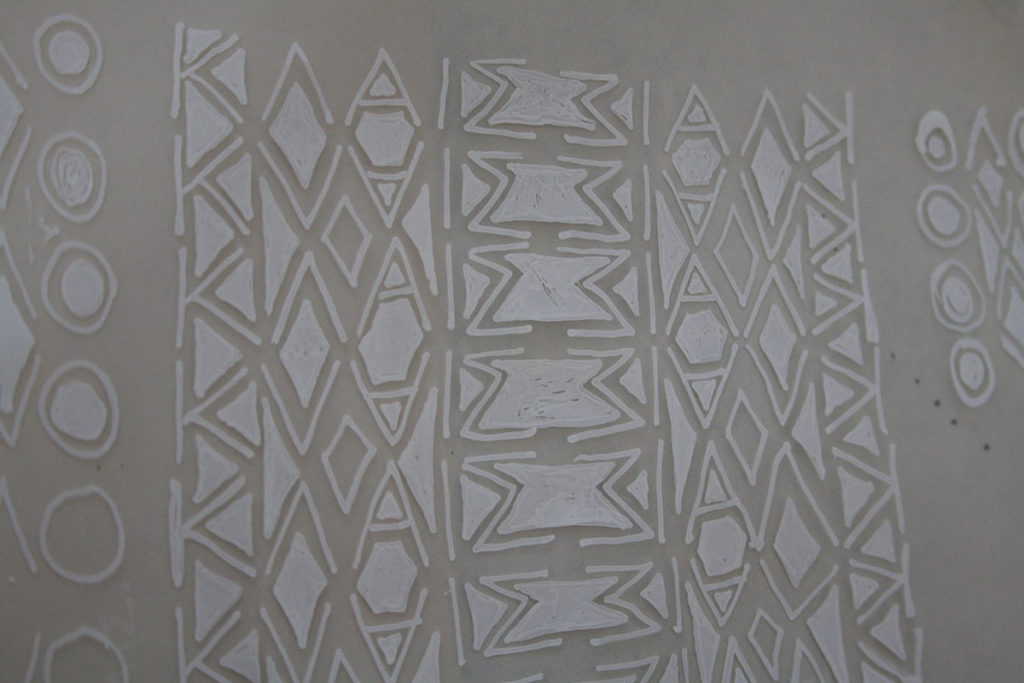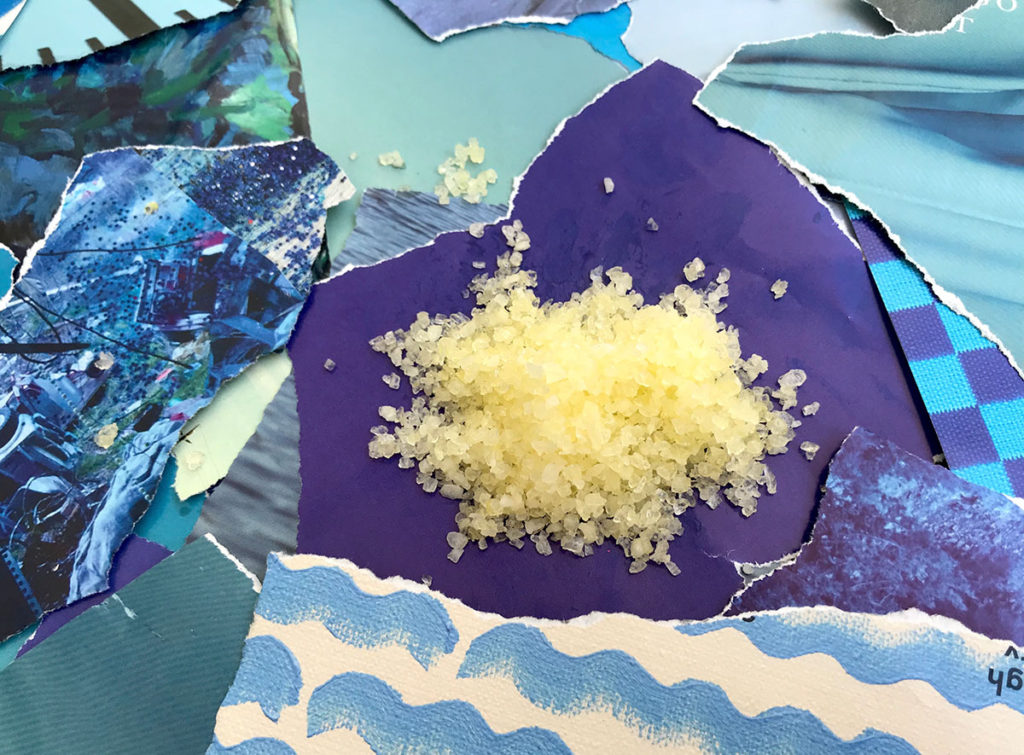Salt Flat
In 1968, Dennis Oppenheim, American conceptual artist, created a flat rectangular surface scattering 1,000 pounds of salt in an abandoned parking lot in New York letting the air, weather and traffic of passers-by and cars to wipe it out.
Salt March
In 1930, Mahatma Gandhi walked 240 miles to the Gujarat coast in India on a protest against the ban of the British colonial government to Indian peasants picking up salt on their own and the specific tax enforcement. Initially, he was folllowed by 78 people, who then became thousands. Getting to Gujarat, Gandhi picked up a handful of salt. The Salt March ended with the capture of about 60,000 people, including Gandhi, and is considered as an emblematic gesture for India’s road to independence.
On the surface:
A film about a woman who goes to Paros to find salt and ends up looking for it at the pool of a hotel. A sculptural installation that starts from the whitewashed joints of the pavement of Marpissa. A song and a home-made scrub from local ingredients, where salt is an antidote to the “evil eye”. A one-minute video-collage of 100 images with observations from Paros.
At the bottom:
The poetry of the lyric poet of Paros in the 7th century BC, Archilochus, whose heroes refuse to follow the ideals of heroism and masculinity as imposed by their society. The (salty) crying as a female affair and a sign of weakness. A friendly but also toxic gift that comments on the modern economy of the “natural beauty” and glorifies feminist killjoys, bitter (fake, salty) feminists and all those who refuse to follow the “Keep Calm and Carry On” motto. The search for a system, a logic, a rhythm in the details of the physical elements, but also an attempt to record the human preoccupation with the elusive and the invisible.

The exhibition “Walking the dog on the salt”, which is being organised in the context of the festival Routes in Marpissa, having as this year’s theme “salt”, it approaches salt as part of a system that includes both physical and social phenomena. The quality of salt to reveal itself to the human eye only when the sea water has evaporated, its blurred nature, both visually and semantically (loaded with positive and negative meanings at the same time) but also the social, historical and gender-related aspects related to its production and use was the starting point for the research of the four artists who traveled to Marpissa and Paros and created a number of new projects specifically for the exhibition. In situ observations, research in different sources, folk traditions and personal experiences, such as the precariousness of artistic work and the traveling nature of the artists in residence, are intertwined. From the blurred quality of salt to the blurred human nature and the relationships of sovereignty, the works of the four female (coincidence?) artists create different levels of interpretations, which dissolve, evaporate, solidify and redissolve. Words play a role. Both in the initial selection of the participants (when I invited them I had in my mind the way in which they move from the text to the image and vice versa), as well as the elements of the presented works, either it is about a script, a lightbox, a verse, a title. Dogs do not need more salt than people may.
Participating artists: Eleni Bagaki, Myrto Xanthopoulou, Erica Scourti, Elena Chantzis


